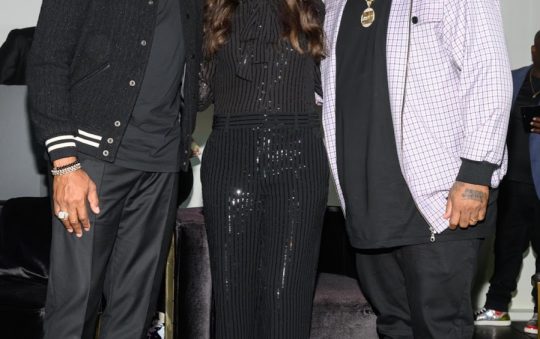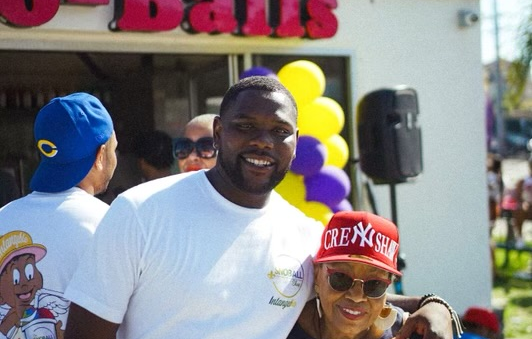
Today’s column, written in 1987, is purely personal. I share it again because it reflects a reaffirmation of family and culture that honed my values and commitment help ensure justice for Black people.
Feelings of warmth and belonging pervaded my visit to New Orleans. I moved to Los Angeles at the age of 8 but returned in 1950 to attend Xavier University. It had been over thirty-seven years since I’d visited my native city.
The world of my childhood was instantly recognizable, memories had faded only slightly. My family has deep roots in New Orleans, especially in the 7th Ward. Endearing friendships, even though my immediate family left years ago, created an indelible affinity with the Crescent City. (It was mind boggling to have an 80-year-old woman, who I had not seen in forty-five years, not only recognize me, but call me by my first name.)
The 7th Ward during my early childhood was predominantly Creole and Catholic. Originally, the term referred to persons of French and Spanish ancestry, but has long since described mixed-race Blacks, many of whom are light-skinned with Caucasian features.
Creoles were and still are, strongly independent, even clannish and many maintained a certain distance from whites and other Blacks.
My visit was filled with nostalgia and camaraderie but I wasn’t prepared for the renewed impact of things that had never strayed from my consciousness. Streets, even street signs, triggered a host of memories and feelings…….whimsical recall juxtaposed to serious, meaningful images; Corpus Christi Church and School, a huge Kindergarten room with a very high ceiling’s celestial eyes peering down on every child…….Sister Angeli, Mother David, teachers, Ms. Francois and Ms. Hickey; Mr. Lawrence, father Casserly……long brown envelopes with Coca-Cola pencils, rulers and ink blotters.
Mardi Gras, “Carnival,” was a time of merriment and vendettas: bicycles with crepe paper-covered wheels; all manner of costumes, Zulus, Rex, spontaneous laughter, multi-colors, waves of color, fantasy, dancing and dreaming. Carnival had become increasingly commercialized. Many residents said they no longer attend parades and some other festivities, feeling they represented a commercially driven merriment.
My sense of family was heightened and affinity among old friends was indescribable. I vividly recalled my mother’s giving and sharing with neighbors. The Great Depression was tough on everybody, especially Blacks. Yet, close bonds and sharing meager resources defined and sealed relationships in the 7th Ward. However, in the 1930s, countless dreams were never realized. My brother Edris, for example, couldn’t find work with a degree in pharmacy because of the lethal combination of the Depression and racism.
Older folks in the 7th Ward spoke patois French but most did not teach it to their children. They spoke in French so that the children could not understand them, unwittingly depriving them of a second language.
As mentioned, Creoles were self-contained and not particularly interested in relating to whites or other Blacks. Many did discriminate based on skin color, and straight hair was “good hair”, kinky , “ bad hair.” with negative connotations far beyond hair. Of course, Creoles were not unique in this regard—Americans, including Blacks, have always made such distinctions and, still do. On the color continuum, “the closer to white, the better.” Creoles were overwhelmingly Catholic, and generally, looked different from other Blacks, many indistinguishable from whites.
I was engulfed in streams of consciousness—people, places, events…..Corpus Christi Church, “Backatown,” Aubry Street, First Communion, the Circle Show, Two Sisters, the Pentagon, Anybody’s, Haspel’s, Bruxelles, Crescent Pharmacy, the neutral ground, St. Bernard Market, the Autocrat Club, beer parlors, long bread, Jax and Falstaff Beer, Xavier Prep and Xavier University.
Family memories: Uncle Robert Aubry and Edwin’s Sunday visits after my father died; Nunc Henri and Taunte Mellie, Aunt Georgies’ house with its big rain-catching cistern; Uncle Bud’s daily meanderings at markets on St. Claude Avenue; fritters, snowballs, icebergs, my brother Leon’s barber shop and ice cream parlor- years later, his bowling alley…. Liuzza’s Bakery, Nick the Greek’s sherbet, “chinees”, (marbles); skatin’ trucks; Belfield’s Drugstore; the Astoria Hotel on Rampart Street; heavy summer rain, thunder, lightning; mud for walking in and playing stick up; cold winters with frozen pipes; hot water heated on the stove and blocks of ice.
Kaleidoscopic memories: Mama searching to find her way after daddy died; my seven brothers, struggling to order their lives in the midst of the Depression, but each unfailingly helping Mama.
Early childhood conversations and incidents burst into consciousness: Uncle Albert, a physician, began practicing around the turn of the 20th Century; Uncle Numa, a pharmacist who moved to Chicago; Uncle Charles and my father were mail carriers—all active in the church and community.
My Uncles Paul and Henry Cambre worked together. Paul, “Uncle Boy”, was stern and authoritative, Henry, mild-mannered and easygoing. On a job, their squabbles were heated but funny. (My grandparents, on both sides, died long before I was born but their legacy was kept alive in family conversations.)
My confusion and unanswered questions about segregation—sitting behind the “screen” on streetcars and buses, segregated theaters–actually, segregated everything. And I could not understand contradictions in the Catholic Church, with its holy doctrines while tacitly embracing racism and segregation.
Yet, the visit home was a vivid reminder of how fortunate I am to be Black and part of a proud, supportive Creole family and culture. It reaffirmed a legacy of love, strength and caring for which I am forever grateful.
l.aubry@att.net







